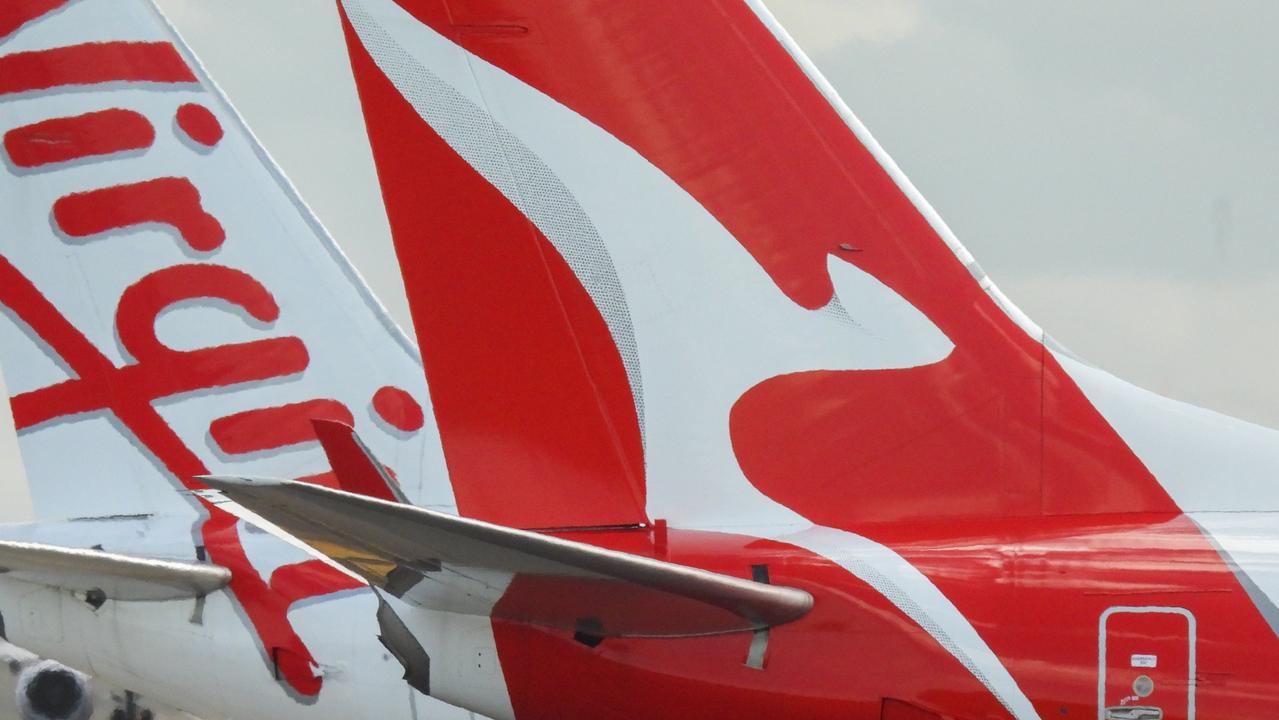Smaller jets to transform international flying on Qantas
Single-aisle, cost efficient jets capable of flying further than ever are set to transform Qantas’s short-haul international operations.

Cost-efficient, longer-range single-aisle jets have emerged as the foundation of Qantas’s financial strategy in the years ahead, flying further than current jets, while using less fuel.
As well as domestic routes, 137-seat A220s and 200-seat A321XLRs will be used on flights throughout the Asia Pacific, in what Qantas has described as a “transformation of short-haul international flying”.
The routes under consideration for A220s include Perth-Christchurch and Adelaide-Auckland, while slightly larger A321XLRs take on Perth-Hong Kong and Brisbane-Bangkok.
Both aircraft will have two cabins, with 10 business-class seats on A220s and 20 on the A321XLRs.

Compared with the aircraft they are set to replace – Boeing 717s and 737s – the Airbus aircraft promise big savings for Qantas, with a 21 per cent unit cost improvement from A220s, and 9 per cent from A321XLRs.
A220s are capable of flying 3.6-hours a day more than 717s, and A321XLRs an extra 1.8-hours a day while burning up to 28 per cent less fuel per seat.
The data presented at the Qantas investor day on Tuesday impressed analysts, with JPMorgan predicting the fleet changes could see the airline increase its international market share.
“Overall benefits from the fleet renewal can serve to strengthen Qantas’s competitive advantages both domestically and internationally in our view,” JPMorgan analyst Anthony Longo said. “In addition, fleet renewal lowers average fleet life to about 9 years from 16 years currently.”
Royal Bank of Canada Sydney branch analyst Owen Birrell suggested the timing of the fleet renewal program had added “valuable flexibility”.
“The renegotiation of the Airbus contract has delivered maximum flexibility for right-sizing of aircraft to routes and demand,” he said.
Despite the significant cost-savings the new aircraft promised for Qantas, fares were not expected to fall, as noted by chief executive Alan Joyce on Tuesday.

Mr Longo said their view was that fares had “structurally rebased above pre-Covid levels” and supply-side constraints in the international sector would help maintain higher prices.
Citi Research analyst Samuel Seow said it was clear fares would play the main role in maintaining the Qantas domestic earnings margin at a healthy 18 per cent.
The news sent Qantas shares up a further 1 per cent on Wednesday to $6.65, travel agents were not so thrilled. Don’t Forget Travel Group director Andrew Sullivan said finding a cheap fare was impossible, and a move to more narrow-body aircraft on longer routes was unlikely to enhance the customer experience.
“I don’t think most travellers take much notice of what aircraft they’re booked on until they get on it, and they hate the experience,” he said.
“Obviously, it’s better for the airline because it’s cheaper for them to operate, but it doesn’t help the passenger experience at all.”
Smaller aircraft also meant fewer cabin crew which could mean a reduced level of service, said Mr Sullivan.
“I think the service side of it will be what people notice,” he said.
With narrow-bodies servicing short-to-medium haul routes, Qantas’s wide-body fleet could operate to more long-haul destinations.
The investor day presentation singled out Chicago, Seattle and Paris as possible additions to the international network, using Boeing 787-9s which currently fly Perth-London non-stop.







To join the conversation, please log in. Don't have an account? Register
Join the conversation, you are commenting as Logout